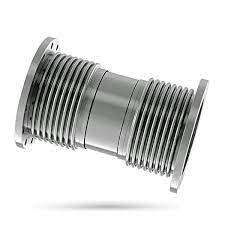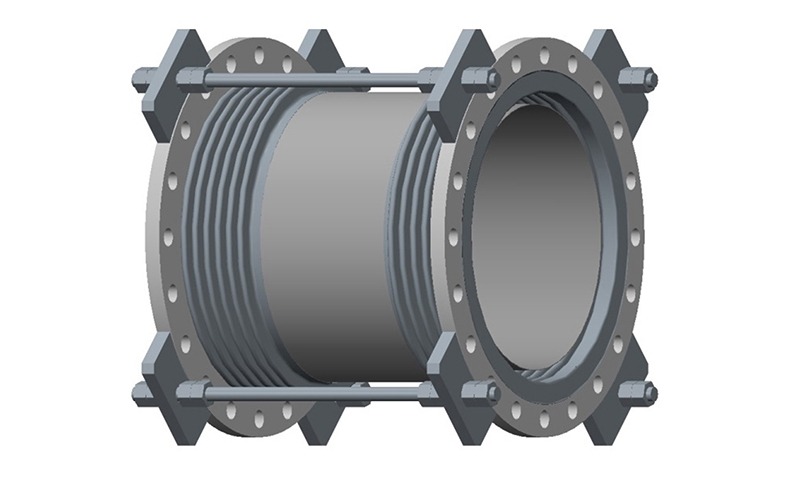Universal Type Expansion Joints
Product Overview
UNIVERSAL TYPE EXPANSION JOINTS
Our universal type expansion joints consist of two bellows separated by a spool or pipe section. The universal type serves as a unit to receive lateral deflection. Each bellows serves as a determinant of the amount of lateral deflection and angulation they can absorb and the distance between the bellows.
The movement absorption of universal expansion joints is not limited by tie rods or joint tensions so universal expansion joints can absorb both axial and lateral expansions.
This universal expansion joints can usually be used up to a pressure level of 6 bars. A prerequisite for choosing universal expansion joints is the possibility of placing the required fixed points and guides.
- Universal Unrestrained type Expansion Joints
- Tied Universal type Expansion Joints
Universal Unrestrained type
Dewdon’s Universal Unrestrained Metal Expansion Joints – welding ends. Also known as the universal un-tied expansion joint. This type of Expansion Joint is made up of two bellows joined together by a central pipe provided with welding ends.
This universal unrestrained metal expansion joint does not restrain pressure thrust so adequate anchors and guides must be provided and they can be used only in a piping systems that incorporate correctly designed anchors and pipe alignment guides.
Features
- Absorption of lateral movements in all planes.
- Easy to absorb large expansion movements.
- Minimum application area
- Preventing axial inaccuracies increases the system safety.

Universal Unrestrained type Expansion Joints
Universal Unrestrained type is also known as the universal un-tied expansion joint. This type of Expansion Joint is made up of two bellows joined together by a central pipe provided with welding ends. The universal untied expansion joint with welding ends is made up of two bellows joined together by a central pipe.
Although it can be used to absorb any combination of the three basic movements it is mainly used to absorb large lateral movements.
The amount of lateral deflection that can be accepted is a function of the degree of angulation each bellows can absorb and the distance between the bellows or length of the central pipe.
Features
- Permits axial, lateral, and angular movements
- Accept large amounts of lateral deflection
- Do not restrain pressure thrust
- Adequate anchors and guides must be provided
